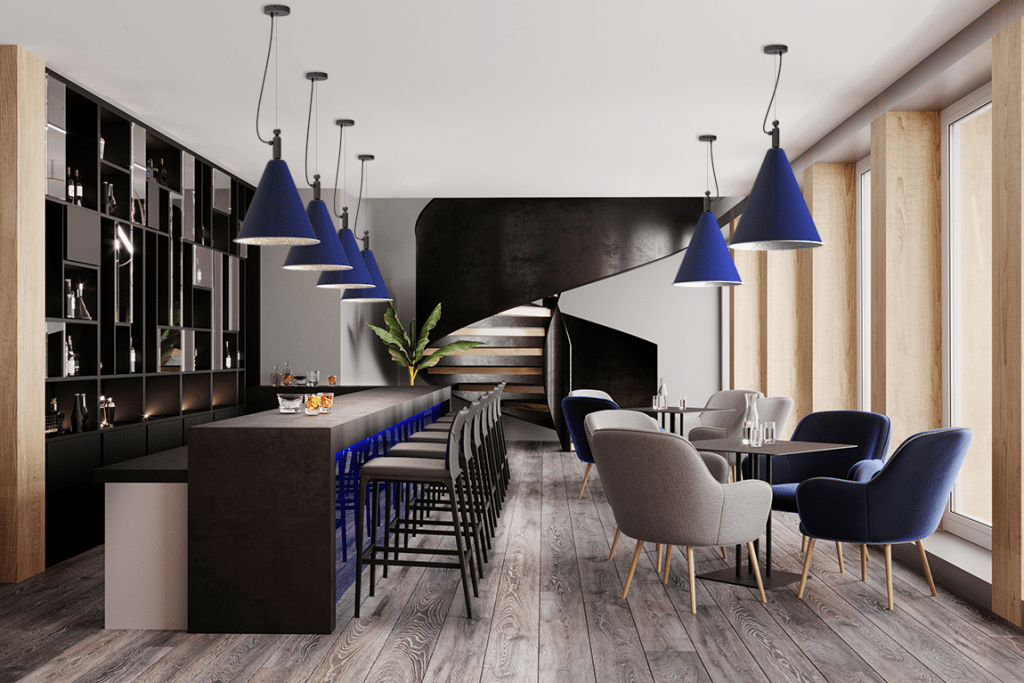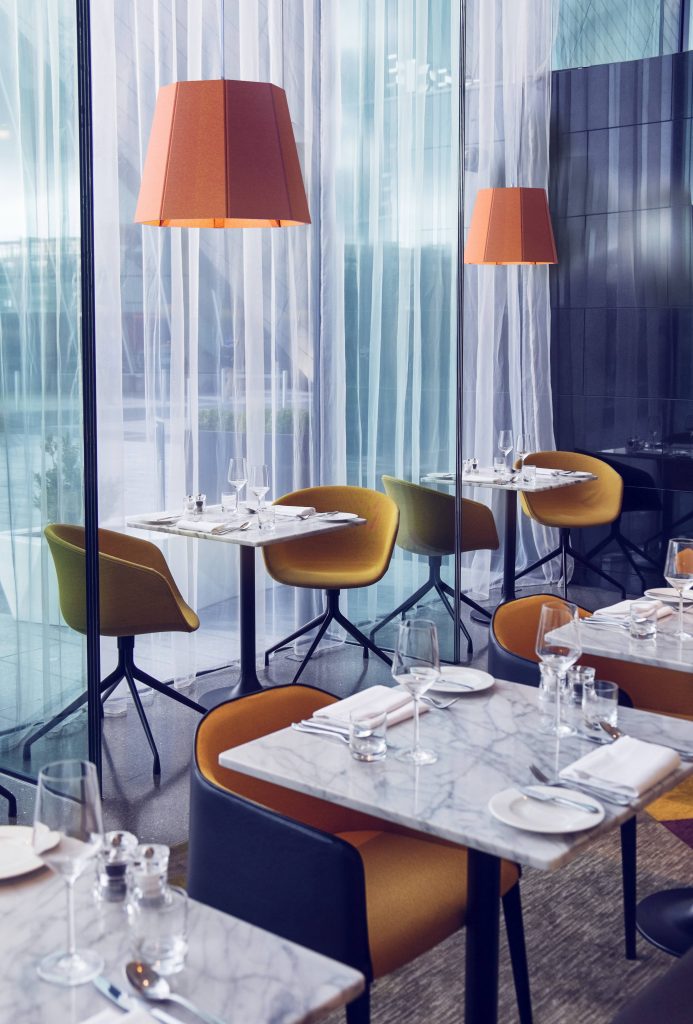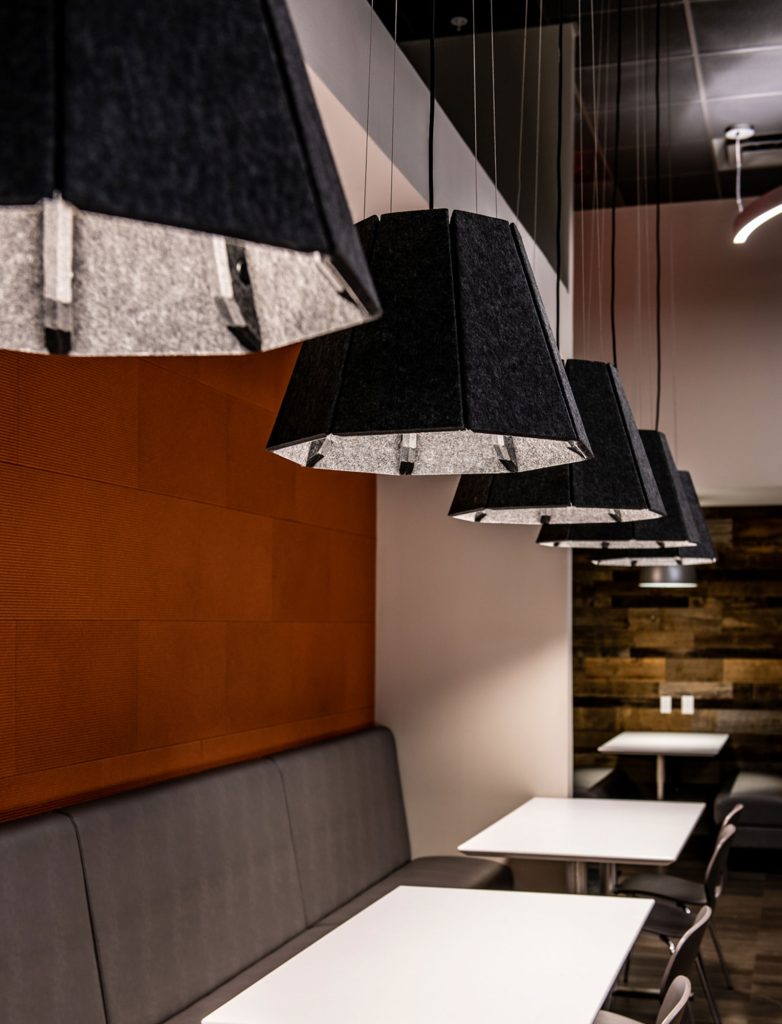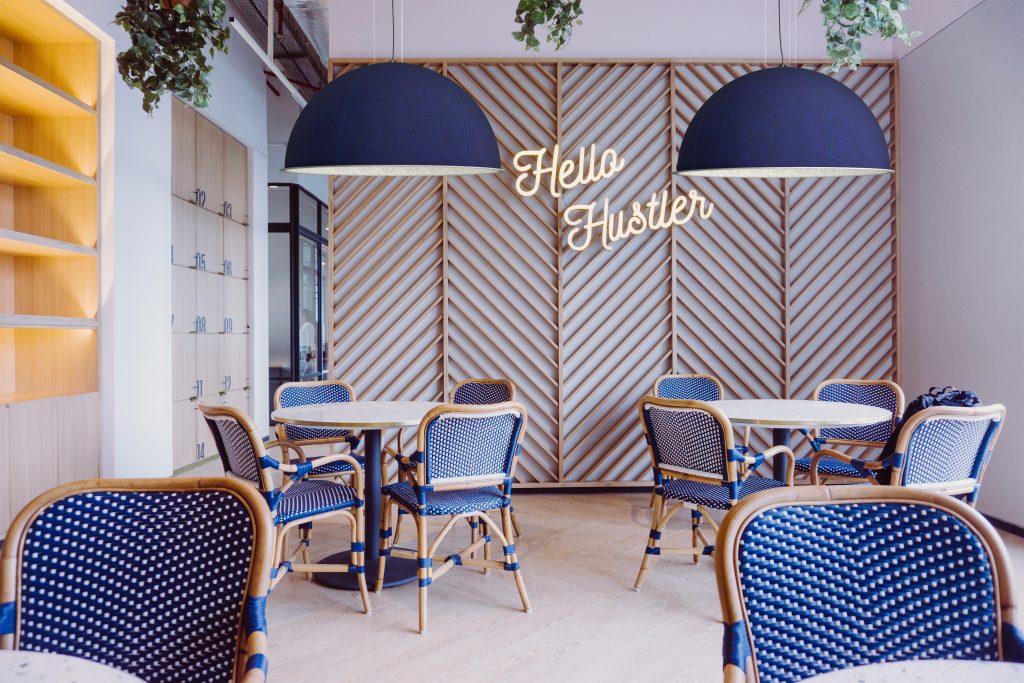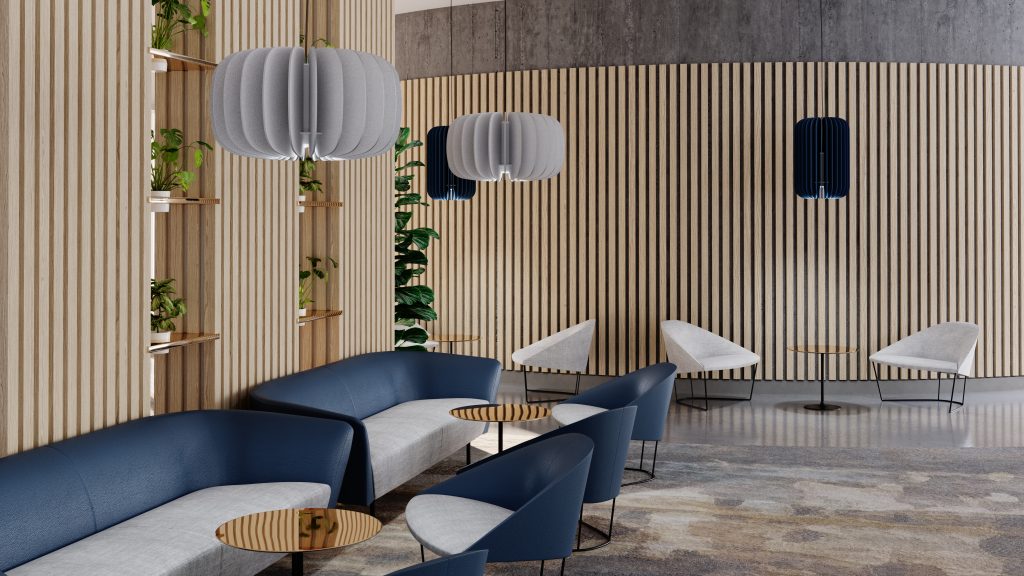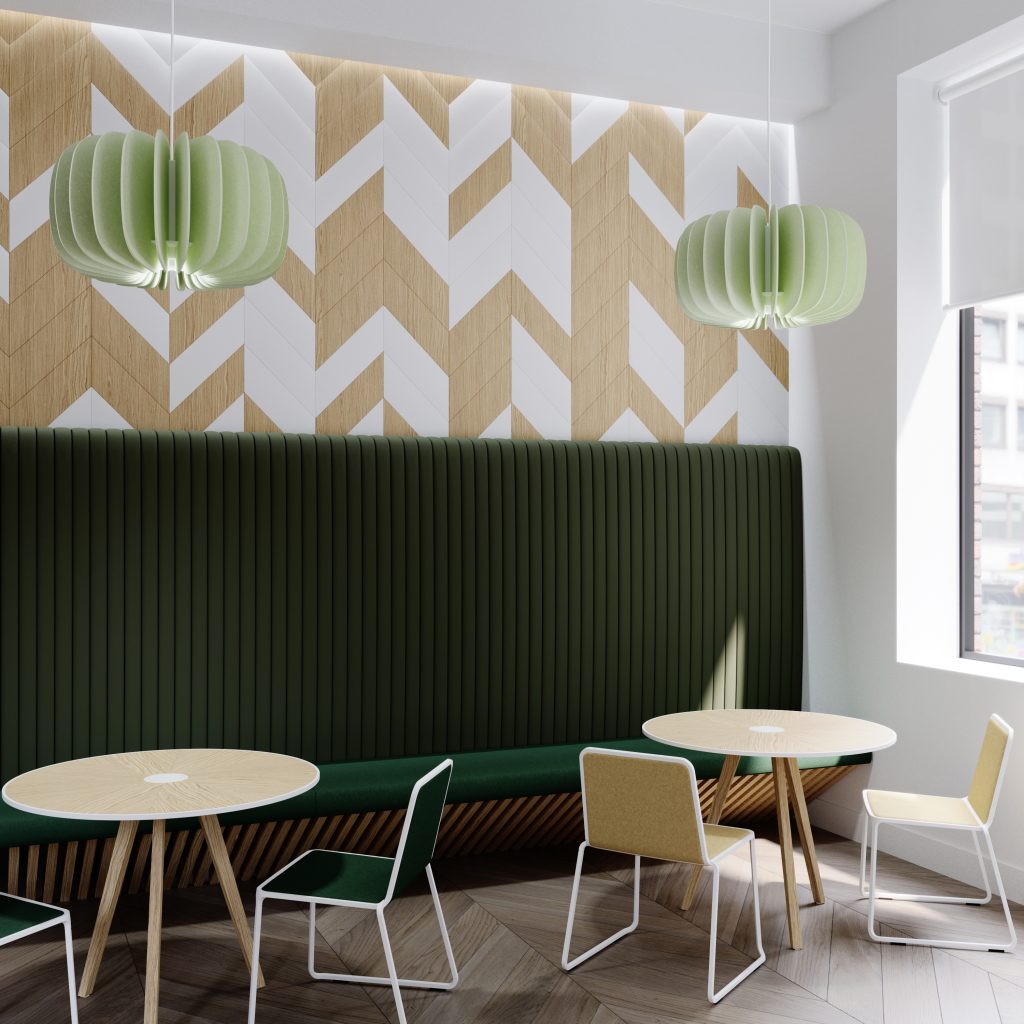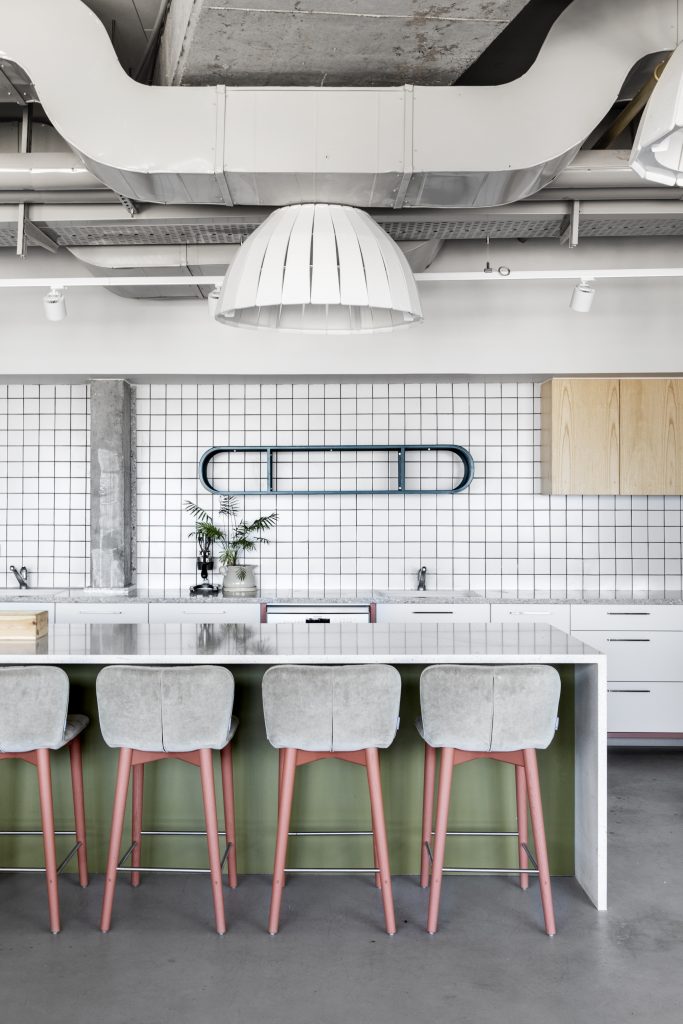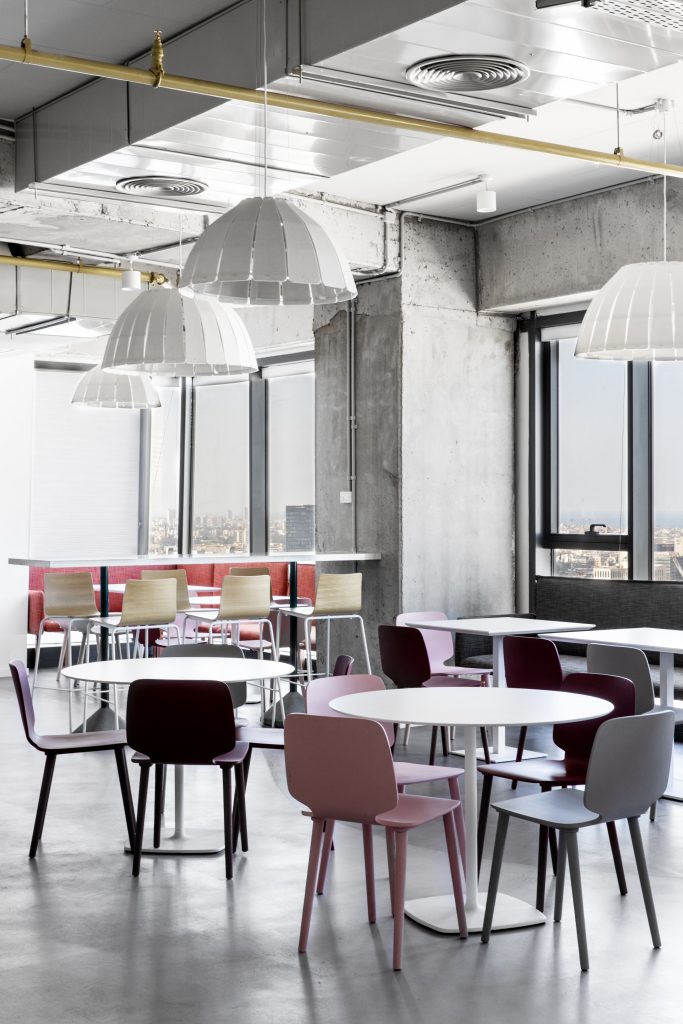Acoustic treatments for dining in comfort
Modern trends in venue design have seen the rise of hard surfaces such as polished concrete, timber and steel, offering an easy-clean industrial vibe, but also a limited opportunity for traditional acoustic treatments. This minimalist style creates an environment for high levels of sound reverberation, creating acoustic discomfort for customers and staff. So, while some sound is essential for creating an ambient experience, how do designers best manage all of these sounds through design?
AS/NZS 2107:2016 recommends designers work to provide “healthy, comfortable and productive environments for the occupants and end-users” and specifies a recommended reverberation time for hospitality interior spaces as less than one second, to ensure diners can comfortably hear one another. Overly noisy environments have many negative impacts, including increased stress levels, difficulty in hearing conversations, distraction and fatigue. By giving careful consideration to the acoustic treatment of the space, designers can mitigate these effects to create a pleasurable environment. Not only does this make it easier for patrons to enjoy their experience, but it lowers stress levels in staff and brings designers closer to compliance with the required standards.
Attending to the functional flow of the venue, by positioning customers away from noisier areas, is one key element in managing sound through layout, however, there can be limitations on space and utilities. Additional design treatments are needed to bring balance to the acoustics and reduce excessive noise within a space. Acoustic lighting offers a particularly effective acoustic solution, as it’s positioned to impede sound waves near their point of origin. Conversational speech is generated at head level, and reverberates from the ceiling, meaning acoustic light fixtures are positioned for optimal effectiveness. Acoustic lighting also performs better than traditional acoustic solutions of similar size and material because the lampshade’s interior and the exterior are both exposed, doubling the functional surface area for sound absorption.
Acoustic lighting is a simple interior design element that can dramatically increase a customer’s experience without significantly increasing building or design costs. They can be included as part of the initial design scheme, or fitted into an existing space. Luxxbox acoustic lights are an economical way to address acoustics in noisy restaurants and cafes with minimal impact on the business. They are easily installed and don’t require the venue to be closed for long periods affecting cash flow.
